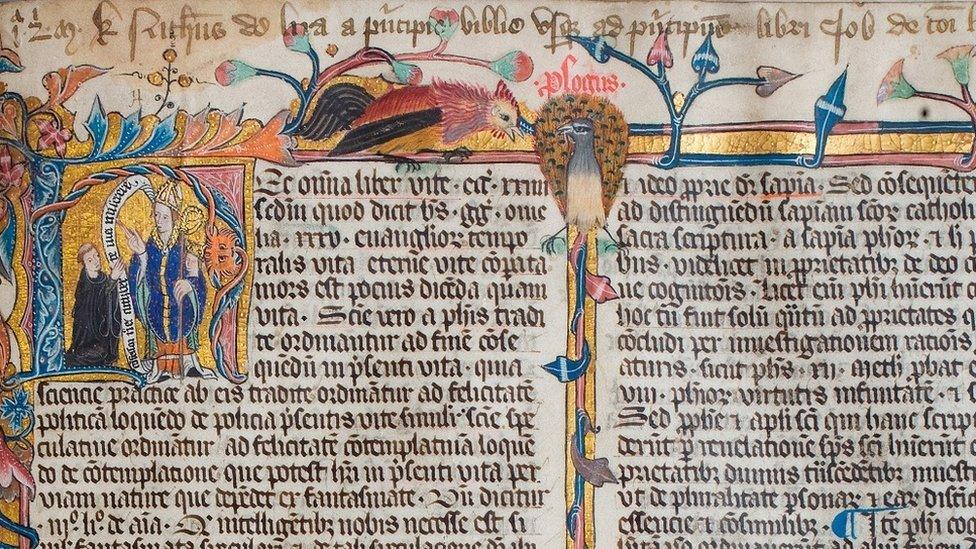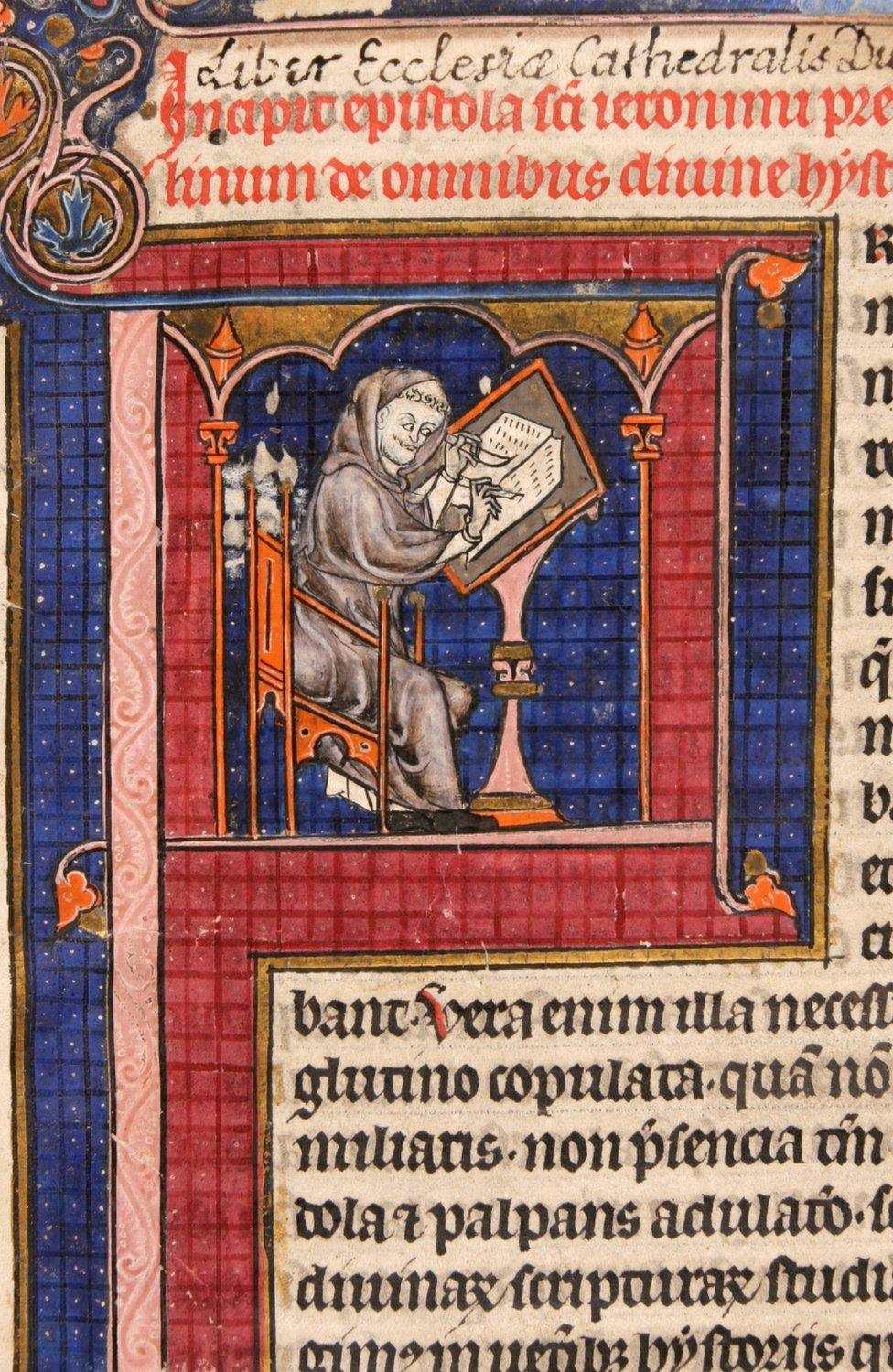Durham Cathedral's medieval manuscripts get digital treatment
- Published

Frank Addison is among the staff who are digitising manuscripts from Durham Cathedral Priory's collection
A collection of medieval manuscripts is being brought into the 21st Century with the launch of a project to digitally reproduce them.
Historic documents belonging to Durham Cathedral's Priory Library are being scanned in high resolution in conjunction with Durham University.
The collection has been described as being "of international significance".
Once in online form, the records will be made available for academic research and public viewing.

The Priory's collection "shows the transition between handwritten manuscripts and early printed books"
The books were originally used by the Benedictine monks of Durham until the dissolution of monasteries by Henry VIII from 1536-41.
Many collections across the country were broken up, but Durham's remained intact and includes "masterpieces of calligraphy... spanning a millennium of European culture", the university said.
Lisa Di Tommaso, head of collections at Durham Cathedral, said: "It is one of the most complete in situ collections in the British Isles with the oldest pieces dating back to the 6th Century. They belonged to the monks who fled Lindisfarne.
"We keep the collection locked away in a very controlled environment with a cool temperature and low lighting so digitising it will enable people to have much greater access to some lavishly hand-illustrated manuscripts."
There are more than 300 volumes in the cathedral's collection and Ms Di Tommaso believes the success of the Lindisfarne Gospels exhibition in 2013 shows there is a strong interest in such works.
The first volumes are available to view online later, external, with others being added as the scheme progresses.
Dr Keith Bartlett, director of culture at Durham University, said: "Just to look at some of the manuscripts as they're being digitised is wonderful, seeing the colours, the richness and the beauty of the works of art."
The project is expected to cost about £1.25m and about £250,000 has already been raised.

Once online, the archive will be available to view at the touch of a button